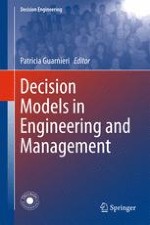2015 | OriginalPaper | Chapter
Decision Models in Credit Risk Management
Authors : Herbert Kimura, Leonardo Fernando Cruz Basso, Eduardo Kazuo Kayo
Published in: Decision Models in Engineering and Management
Publisher: Springer International Publishing
Activate our intelligent search to find suitable subject content or patents.
Select sections of text to find matching patents with Artificial Intelligence. powered by
Select sections of text to find additional relevant content using AI-assisted search. powered by
